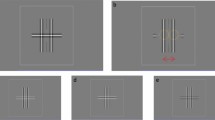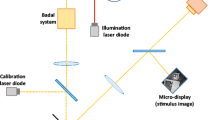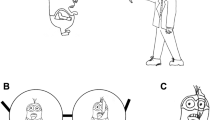Abstract
Our vision system receives two different images from our two eyes. Since these two images usually have high correlation they are fused into a single stable image. In binocular rivalry suppression a stimulus presented in one eye is suppressed and a different stimulus in the other eye is perceived for a certain time interval. For strabismic observers the suppression is continuous between different retinal images caused by misalignment of eye positions. Previous research investigated the effects of this binocular rivalry suppression on a number of visual processes. The present study looked at the effects of contrast adaptation for the adaptation stimulus presented to eyes under interocular suppression. We compared normal and strabismic observers and found that in both types, regardless of the existence of suppression, there was the effect of contrast adaptation. These findings provide evidence that the suppression occurs at a site in the visual system after the locus of contrast adaptation. The contrast adaptation strength differed in the two types of observers.
Similar content being viewed by others
References
R. Blake: Percept. Psychophys. 29 (1981) 77.
H. Karein: Vision Res. 29 (1989) 1325.
N. W. Daw: Visual Development (Plenum Press, New York, London, 1985) pp. 95–100.
A. W. Freemen and N. Jolly: Vision Res. 34 (1994) 2043.
S. de Belsune and R. Sireteanu: Invest. Ophthalmol Vision Sci. 32 (1991) 2645.
E. L. Smith 3d, D. M. Levi, R. E. Manny, R. S. Harwerth and J. M. White: Invest. Ophthalmol Vision Sci. 26 (1985) 80.
Y. Bonneh, D. Sagi and A. Krmi: Vision Res. 41 (2001) 981.
R. Blake and R. Fox: Vision Res. 14 (1973) 687.
R. Blake and R. Fox: Nature 249 (1974) 488.
C. Blakemore and F. W. Campbell: J. Physiol. 203 (1969) 237.
H. R. Wilson and D. K. McFarlane: J. Opt. Soc. Am. 1 (1984) 124.
H. R. Wilson, D. K. McFarlane and G. C. Phillips: Vision Res. 23 (1983) 873.
S. Shioiri: Handbook of Visual Information Processing (Asakura Press, Tokyo, 1999) pp. 200–210.
R. Blake and R. Overton: Perception 8 (1979) 143.
J. Atkinson and F. W. Campbell: Vision Res. 14 (1974) 159.
Author information
Authors and Affiliations
Corresponding author
Rights and permissions
About this article
Cite this article
Yanagisawa, M., Uchikawa, K. Contrast Adaptation Effects under Interocular Suppression for Normal and Strabismic Observers. OPT REV 9, 176–181 (2002). https://doi.org/10.1007/s10043-002-0176-z
Received:
Accepted:
Issue Date:
DOI: https://doi.org/10.1007/s10043-002-0176-z




